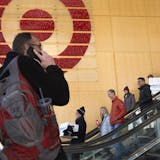Let's start with the name: skyway.
It's so very Spacely Sprockets, conjuring visions of the Jetsons commuting through the clouds. In a skyway, it would seem as if we could leapfrog between skyscrapers, or grab lunch alongside the local falcons.
In truth, we're simply upstairs, one floor up from the storm drains.
We still can view the clutter of drivers' dashboards or check which food trucks are parked out front. Yet since the first skyway opened in 1962, the elevated passages have signified escape, whether from traffic noise, stoplights or the weather.
This year, Minneapolis, home to the world's most extensive skyway system — in the world, baby! — will bolster that status when the 8 miles of existing walkways are extended another mile to U.S. Bank Stadium sometime this summer. Seems like a good time to examine the invention that made possible our second-story city.
Minneapolis may be known for its skyways, but they weren't designed for visitors, but for 9-to-5 office workers.
In the mid-1950s, downtown was on the ropes. Swanky Southdale, with its indoor shopping, had opened in Edina, while General Mills had moved to verdant suburban headquarters in Golden Valley. The city was losing its mojo.
Leslie Park, a visionary real estate developer, long had touted elevated walkways, and as downtown vacancies grew, people began listening. With architect Ed Baker, Park oversaw the first skyway installed over Marquette Avenue in 1962, connecting Northstar Center and what was then Northwestern National Bank.



